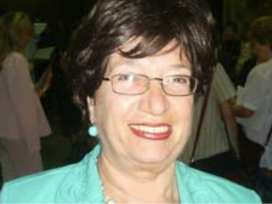
In memory of Nada Ler Sofronić, the feminist voice pivotal in supporting a unified vision of Bosnia-Herzegovina, drawing on valuable experiences as an intellectual, whose engagement was with the whole of Yugoslavia and beyond.
Many of the early twentieth-century champions of eugenics were social democrats and feminists. All shared a belief that science and technocracy could re-engineer society for the better. Attempts to institutionalize eugenics coincided with the emergence of welfare states and infrastructure to monitor the ‘feebleminded’.
What Malthus called the population question looms large in the intellectual history of social policy which I examine in my book Three Roads to the Welfare State: Liberalism, Social Democracy and Christian Democracy. In Catholic Ireland, where abortion and contraception were prohibited, systems of coercive confinement for unmarried mothers and their unaccepted children persisted for much of the twentieth century. Yet misogynistic paternalism was by no means the sole preserve of Catholic social policy. For example, social democratic Sweden subjected more than sixty thousand women to forcible sterilisations during the same pre-1970s period.
During the early twentieth century, champions of eugenic social engineering variously advocated contraception, restrictions on the rights of the ‘unfit’ to marry and the sterilisation of those they deemed unfit. Some saw themselves as engaged in a kind of class war against the lower orders and advocated population controls to prevent the responsible classes from becoming swamped by the so-called ‘unfit’. Some on the left viewed these as the enemies of socialism. The underlying presumption was that there were significant inheritable differences between individuals and that if undesirables could be prevented from having children then social problems associated with these could be prevented. Elitist supporters of eugenic social policy variously championed measures aimed at preventing undesirables from reproducing (negative eugenics) while at times also supporting policies designed to encourage suitable people to have healthy offspring (positive eugenics).
The intellectual champions of negative eugenics included the novelist HG Wells, prominent members of the Fabian Society like Beatrice and Sidney Webb, William Beveridge, who became the architect of Britain’s welfare state, pioneers of women’s reproductive rights like Annie Besant and Marie Stopes, and the Swedish social democrat intellectuals Alva and Gunnar Myrdal. They all shared some degree of belief that science and technocracy could re-engineer society for the better, although most (the exceptions being Wells and Stopes) did not have scientific backgrounds.
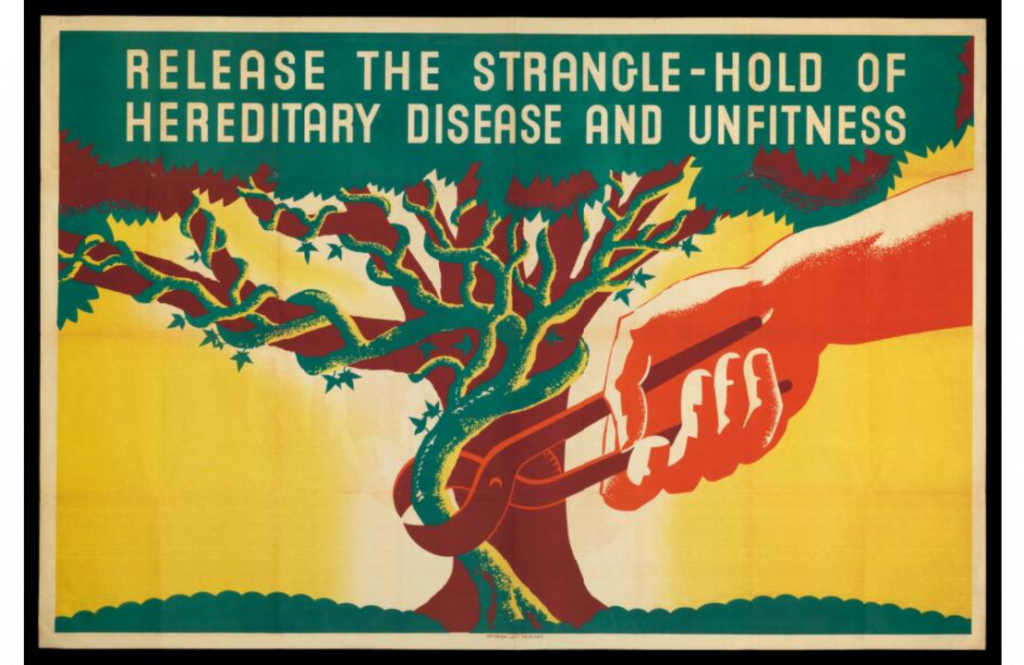
A Eugenics Society poster (1930s) from the Wellcome Library Eugenics Society Archive. Photo by Wellcome Library, CC BY 4.0, via Wikimedia Commons
In Britain the Fabian Society promoted the ideal of a state-regulated social order directed by professional experts. Social policy would in future no longer seek to address pauperism, crime, alcoholism, mental illness or illegitimacy through the system of workhouses, prisons and asylums that had expanded during the nineteenth century. Instead, social problems would be solved through the application of expert knowledge held by doctors, psychiatrists, academics, social workers, criminologists and other specialists.
In Anticipations (1901), Wells outlined his vision for a future utopian society which might be achieved through social engineering and eugenics policies that would prevent the procreation of – or, in some cases, bring about the death of – those unfit to be part of his envisaged New Republic. Wells’s polemic is significant because its popularity highlighted the acceptability of eugenicist ideas even before the establishment of the British Eugenics Society in 1907 and similar bodies in other countries. Anticipations made an extreme case for measures that were enthusiastically debated, if only partially implemented, in democratic countries.
Eugenic societies were established in Germany (from 1905), New Zealand (1911), the United States (1911), the Netherlands (1912), Sweden (1910) and Australia (1913). International eugenics congresses were first held in Dresden (1911), then London (1912) and New York (1921). The first professorship in eugenics was established at the University of London in 1911. Attempts to institutionalise negative eugenics generally coincided with the emergence of welfare states with ministries of health or equivalent infrastructure that allowed for the monitoring of the so-called feebleminded in schools, hospitals and prisons. In the United States human sterilisation was first used as a form of punishment for crimes such as prostitution. The first eugenic sterilisation bill in the United States was introduced in 1897 in the state of Michigan: it was not passed into law. However, by the end of the nineteenth century the practice of (illegally) sterilising “feeble minded and idiot” inmates had been documented in Kansas and Indiana. Sterilisation laws were first passed in Indiana in 1907 (for the prevention of the procreation of “confirmed criminals, idiots, imbeciles and rapists”) and in several other states (California, Washington and Connecticut) by 1909. In all a total of twenty-seven states passed such laws.
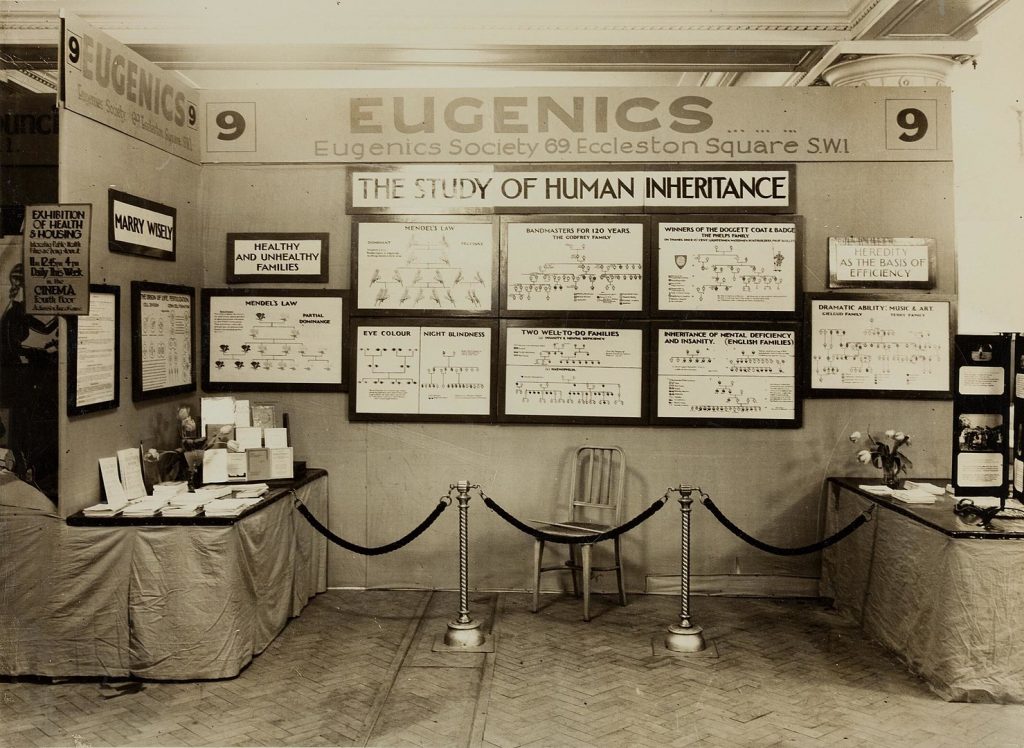
Eugenics Society Exhibit (1930s). Photo by Wellcome Library, CC BY 4.0, via Wikimedia Commons
Wells professed little doubt that in the future the euthanasia of “the weak and the sensual” could be achieved. In Anticipations he declared that the belief in human equality which was implicit in all the liberalising movements of the world had been “destroyed, quietly but entirely” by acceptance of Darwin’s theory of natural selection:
It has become apparent that whole masses of human population are, as a whole, inferior in their claim upon the future, to other masses, that they cannot be given opportunities or trusted with power as the superior peoples are trusted, that their characteristic weaknesses are contagious and detrimental in the civilizing fabric, and that their range of incapacity tempts and demoralizes the strong. To give them equality is to sink to their level, to protect and cherish them is to be swamped in their fecundity.
Sidney Webb declared Anticipations to be his favourite book of the year. Beatrice Webb described it as the most remarkable one, and as the work of ‘a powerful imagination furnished with the data and methods of physical science working on social problem’. The Webbs and George Bernard Shaw were anxious to recruit the hugely popular novelist into the Fabian Society.
Shaw was sceptical of negative eugenics. He considered that many of the claims put forward by Wells in support of sterilisation and euthanasia were based upon unconvincing science as well as dubious morality. However, he maintained that such improvement was a goal worth striving for. In an appendix to his play Man and Superman (1903) he advocated establishing a government Department of Evolution to study ways of creating the Superman. He recommended that women who managed to produce healthy citizens by careful selection of the fathers of their children be rewarded by the state. He suggested that the War Office could employ women to marry suitable soldiers or that a local government bylaw might direct that women have a year’s maternity leave under certain circumstances. The progressive idea here, the use of allowances paid by the state to prevent child poverty, was also put forward by Wells and was integral to subsequent positive eugenic proposals in Britain, Sweden and elsewhere. The other side of this argument was that the unfit should not benefit from such measures – these should be sterilised so as not to – produce burdensome children was also widely advocated.
Wells became a member of the Fabian Society in 1903 but was too much of an intellectual gadfly to influence the movement. With an imagination that fired on all cylinders, he never managed the political consistency of the society’s other ideologues. In A Modern Utopia (1905), he backtracked some of the way from his advocacy of euthanasia. His Utopia #2 would not, however, permit the reproduction of inferior types. The unfit and the incorrigible would be exiled to remote islands that were segregated by gender where they could do anything they liked except have children. A New Utopia was not without its flashes of humour but Wells was adamant that his ideal society could not be run along democratic lines. His ‘sound and happy World State’ was to be ruled by an ascetic caste of benevolent administrators, the Samurai. It was partly from these that Aldous Huxley derived the technocratic caste of Alphas who administered the world government depicted in his novel Brave New World (1932).
In a 1910 essay, ‘Eugenics and the poor law’ published in the Eugenics Review, Sidney Webb claimed that the nation was breeding from its inferior stock because the existing Poor Laws subsidised ‘the reproduction of mental moral and physical defectives’ and discouraged ‘the thrifty from undertaking the responsibilities of parentage’. He complained that the existing Poor Laws did not even try to check the continued procreation of uncertified mentally defective persons and that the system offered free maternity care to feeble-minded women or women who were morally and mentally degenerate. Webb, like Wells, argued for a more generous approach to the welfare of healthy mothers and babies while at the same time advocating ‘steps to prevent the continued procreation of the feeble-minded at the public expense’. He proposed handing the care of the whole of this class over to a separate government Department for the Mentally Defective (Shaw’s idea) and advocated that this be given the power to segregate the unfit from the rest of the population.
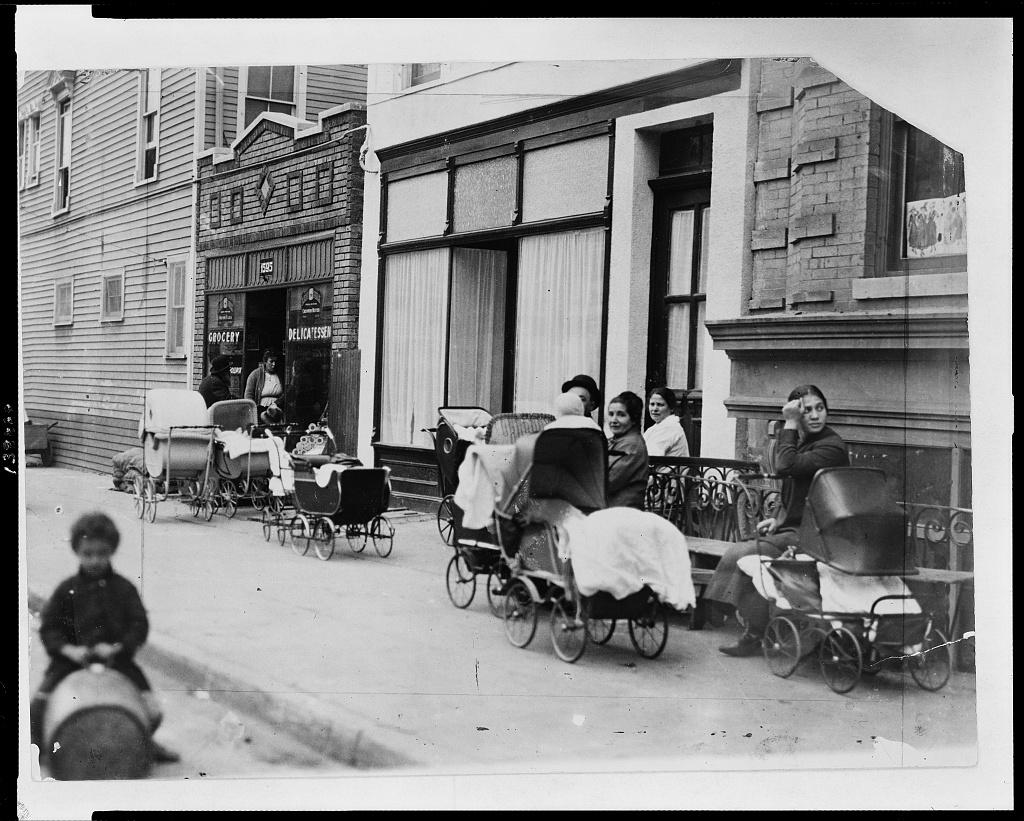
The Sanger Clinic, 46 Amber Street, Brooklyn. Photo via Library of Congress, Public domain, via Wikimedia Commons
By the beginning of the twentieth century eugenics theories had come to influence feminist thought in Britain and the United States. This influence could be seen from the writings of the two most influential advocates of birth control, Margaret Sanger and Marie Stopes. Sanger was an American midwife whose pamphlet Family Limitation (1914) argued for ‘sound and sane’ birth control education to both conserve the lives of mothers and prevent the birth of diseased and defective children. She fled from the United States to England to avoid prosecution for promoting contraception. There she met Stopes, who organised a campaign in her support that included HG Wells and other prominent British progressives. Stopes was a scientist and university lecturer whose academic research focused on palaeobiology before she became best-known as an advocate for birth control. In 1912 she became a member of the Eugenic Education Society in London. She became internationally prominent following the publication of her international bestseller Married Love (1918), which included a chapter on contraception. She founded Britain’s first birth control clinic. In the aftermath of the First World War Stopes and Sanger led similar campaigns for eugenic birth control in Britain and the United States, which were emulated by likeminded reformers in Australia.
In Radiant Motherhood: A Book for Those Who Are Creating the Future (1920) Stopes protested that ‘society allows the diseased, the racially negligent, the thriftless, the careless, the feebleminded, the very lowest and worst members of the community, to produce innumerable tens of thousands of stunted, warped and inferior infants’. These were ‘doomed from their very physical inheritance to be at the best but partly self-supporting, and thus to drain the resources of those classes above them which have a sense of responsibility’. Stopes advocated the introduction of laws to ‘ensure the sterility of the hopelessly rotten and racially diseased’. Her zeal for sterilisation extended to those would engage in inter-racial marriages. In a 1934 interview published in Australian Women’s Weekly she stated that she believed that ‘half-castes’ should be sterilised at birth.
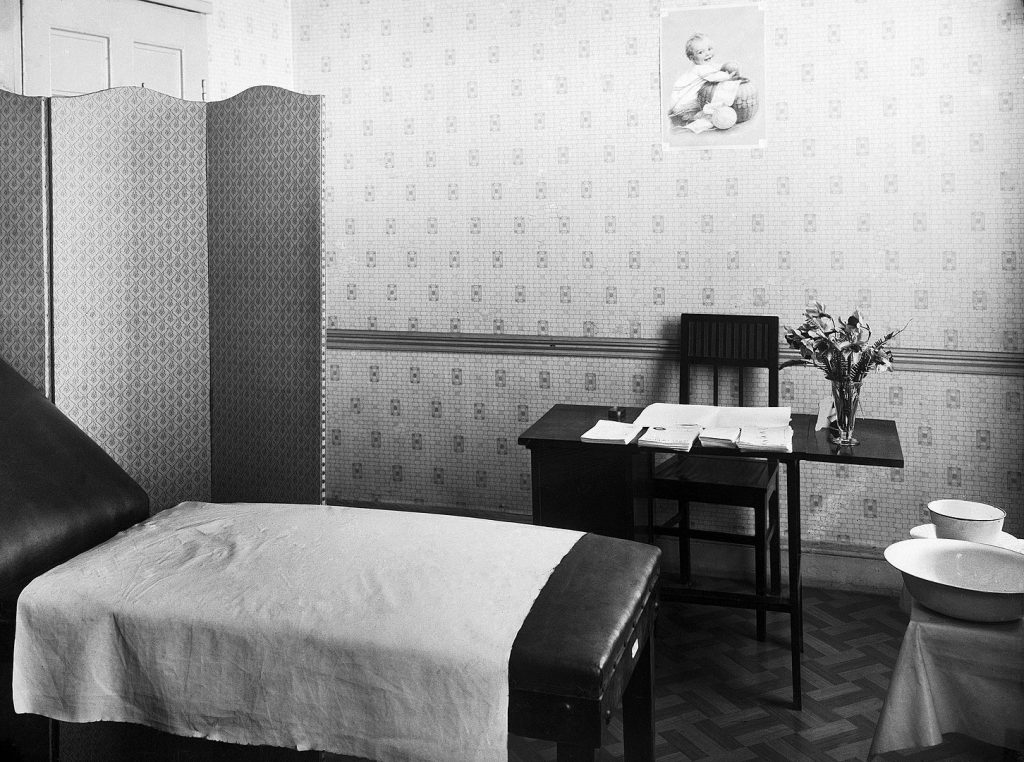
Interior of Marie Stopes’s birth-control clinic, Whitfield Street, London. Photo via Wellcome Images, CC BY 4.0, via Wikimedia Commons
Ruth Hall, in her 1977 biography of Stopes, gives an example of her antipathy towards children with disabilities. Stopes received and responded to many letters from parents seeking advice about sex or childrearing. In 1924 a deaf and dumb father of four deaf children wrote asking for help in getting his son admitted to a special school. Her response criticised the man and his wife for failing in their duty to the community by having children. On the same day she wrote a letter of complaint to the chaplain of the Royal Association of the Deaf and Dumb complaining that ‘two defectives, both brought up at public expense’ were permitted to produce four defectives also at public expense. The chaplain, who had recommended places in the school for these children replied: ‘Ought I, then, to have recommended the lethal chamber?’
Stopes’s support for sterilisation was not sufficiently shared in Britain to become the subject of legislation even though such laws were passed in a number of other countries. Enthusiasm for eugenics lent itself to comedy and satire, most notably in Aldous Huxley’s Brave New World (1932) and Rose Macauley’s comic novel What Not, A Prophetic Comedy (1919), a template for Huxley’s book. What Not, written shortly before Gunnar Myrdal called for a party of the intelligent, was set in a near future in which the British government’s Ministry of Brains is responsible for eugenics policies and propaganda. Sixteen years earlier, in Man and Superman, George Bernard Shaw had proposed a similar Department of Evolution and in 1910 Sidney Webb called for the establishment of a department to take responsibility for the mentally defective.
In Macauley’s novel, Nicholas Chester, the earnest Minister of Brains, falls in love with Kitty Grammont, a civil servant who works on propaganda campaigns. She is transferred to new branch of the ministry which deals with abandoned uncertified babies. When asked what happens to these babies by a friend who is a new mother, Kitty responds that she couldn’t possibly say but that her friend wouldn’t like to know the answer to her question. The inference is that unfit children are euthanised. At the end of a church service the congregation sings a hymn composed by the Brains Ministry and takes up a collection for the education of imbeciles. Citizens are exhorted by state propaganda to become more efficient and to improve their minds and they are only permitted to marry, as proposed in Wells’s A Modern Utopia, if they are certified as mentally fit to do so. The efforts of the Ministry come unstuck following a scandal in which Nicholas, who married Kitty in secret, is revealed to be uncertified for matrimony because his sister has a mental disability. The media then turn against government eugenics policies and thousands of angry citizens march in protest. Careers and ideals lie in ruins and the Ministry of Brains is no more.
For all that Britain was the initial hotbed of eugenic thought and for all that this came to be reflected within social policy debates, the legal application of such ideas stalled before the First World War. The 1913 Mental Deficiency Act did not approve the sterilisation of so-called mental defectives and it did not pave the way for further eugenic law-making in Britain, even if the case for such laws remained intellectually credible there. However, it did allow for the segregation of ‘mental defectives’. Subsequent efforts to widen the definition of these to include habitual criminals and other social undesirables and to permit the sterilisation of these were rejected by parliament.
Swedish social democrats like Alva and Gunnar Myrdal championed eugenics as the solution to social problems. Both were convinced of the benefits of the practice to social democracy. But how could they have been so certain, their daughter Sissel Box wondered in her 1992 biography of her mother, of the claims they put forward during the 1930s to justify negative eugenics? She recalled her father as an intellectual elitist who was certain of his scientific objectivity. Nowhere, perhaps, did modernist optimism remain such a driving force of social policy for so long as in Sweden. Many Swedish intellectuals and pundits came to view their country as the most advanced and as having the world’s most progressive social policies.
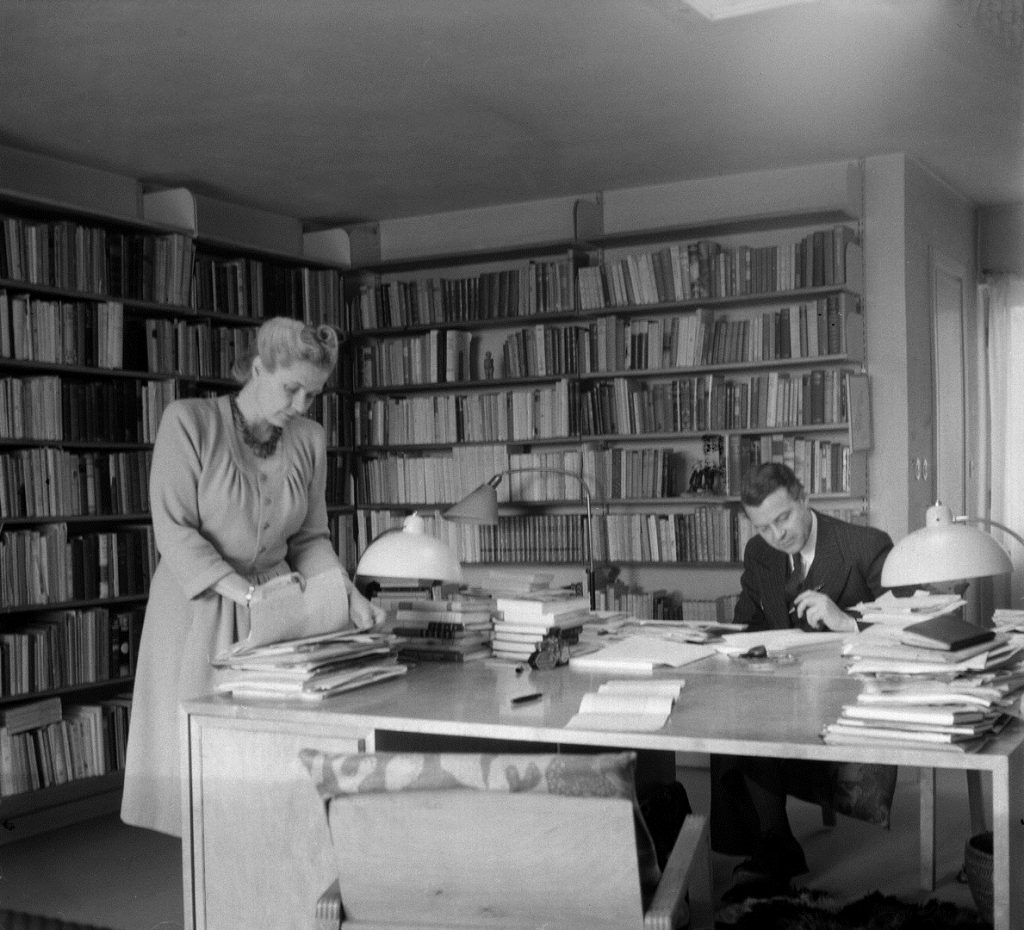
Alva and Gunnar Myrdal in their home in Bromma, Villa Myrdal. Photo by KW Gullers / Nordiska museet, Public domain, via Wikimedia Commons
The Myrdals were, as Yvonne Hirdman put it in Alva Myrdal: A Passionate Mind (2008), ‘prototypical rationalist social engineers, who were certain about how things ought to be and about how a life should be lived’. Yet, both spent their young adulthood during the 1920s stumbling towards the feminist values they would insist were integral to social democracy. In 1922 Gunnar declared that he did not believe that most women should be permitted to graduate from university or to work alongside men after they were married. A decade later they both argued for social reforms that would give women the choice to do otherwise and compensate them economically if they decided to have children. The driving influence here most likely came from Alva Myrdal, who was a sociologist and child psychologist and won the 1982 Nobel Peace Prize for her subsequent work with the United Nations.
In their book The Crisis in the Population Question (1934) the Myrdals advocated social policies aimed at encouraging women to have more high-quality children. These included better public housing, state provision of childcare to enable women who had become mothers to remain in paid employment; they also argued that the unfit should be discouraged from giving birth. The handicapped, they maintained, were less likely to find niches in which they could contribute to the community in a modern industrial society than in the old peasant society: modern industrial society required a higher quality of ‘human material’ than life on the farm. It was necessary to think about how it might be possible to ‘root out all types of physical and mental inferiority within the population, both the mentally retarded and the mentally ill, the genetically defective and persons of bad character’. The Myrdals advocated that feeble-minded persons who were unable to care properly for their children should be subject to voluntary sterilisation. And if it turned out that pressure to get them to do so was unavailing then ‘a sharpening of the law ought to be considered, giving the authorities of the society the right to sterilise even against their will persons with legal competence’. The state, they argued, had a right to impose forced sterilisation, which should be mandatory for persons incapable of making a rational decision.
Whether various medical conditions rendered people affected by them as ‘valueless’ or not was a matter for discussion. For example, they acknowledged that too little was known about the causes of schizophrenia to warrant compulsory sterilisation, while manic depression did not make those affected ‘unequivocally valueless’. However, they insisted that there were thousands of people with environmentally caused mental illnesses and social problems who would not make good parents. Such persons should be strongly advised by doctors and social workers to undergo voluntary sterilisation. The state, they proposed, should provide free contraception and abortion to such ‘undesirable parents’.
In the aftermath of their 1934 book, both Myrdals (but especially Gunnar) wrote much about how The Crisis of the Population Question had exerted a seminal influence on Swedish social policy. They and others credited the book with shifting political attitudes. The social democratic government used the public debate that occurred in the wake of their bestseller to promote its programme of public housings, social welfare and eugenics.
Sweden’s history of eugenics laws preceded the championing of such measures by the Myrdals. But due to their influence, Alva Myrdal claimed in in her 1941 book Nation and Family, ‘the need for sterilization on social grounds gained momentum’. Legislation passed in 1915 had prohibited those suffering from a mental illness or epilepsy from lawfully marrying. A Sterilisation Act, passed in 1934, had coincided with the publication of The Crisis of the Population Question. This Act permitted eugenic sterilisation on social, humanitarian or criminal grounds in some circumstances. Social grounds were defined as those involving psychologically, physically or morally inferior individuals not suited to care for children. In 1941 this Act was extended to give doctors, teachers and other officials greater powers to authorise ‘voluntary’ sterilisations. Further legal grounds for sterilisation included alcoholism. Officials were empowered to determine that somebody had consented voluntarily to sterilisation. Anything above a ten per cent risk of inheritable mental defect or above one and a half per cent risk of some kinds of physical disability was deemed as grounds for sterilisation. Epileptics were prohibited from marrying unless they submitted to sterilisation.
Both the 1934 and 1941 Acts required that sterilisations be voluntary, but in practice this provision was defined by the consent of officials who acted as legal guardians. Coercive or involuntary sterilisation occurred in many cases where those were sterilised did not have an intellectual impairment. Powers to enforce sterilisation laws were given to doctors, judges and school headmistresses. The vast majority of those who were sterilised were female.
Coercive or involuntary sterilisation often involved deception (performing the procedure during the course of another medical operation), under pressure (sterilisation was a condition of parole or release from an institution), threats (of the withdrawal of social benefits), lying about the procedure (telling the victim that it was reversible or pressing it upon someone who had not sought it. Women were the main victims in all this. Alleged promiscuous sexual behaviour, negligent childcare or even untidiness or sloppiness were deemed to be grounds for sterilisation. The rationale for these sterilisations was not based on eugenic factors. Rather, the aim was to eliminate asocial behaviour thought to be socially hereditary.
Between 1935 and 1975, some 62,888 sterilisations were performed by performed. Many if not most of these were coercive. The 1934 and 1941 legislation gave wide-ranging powers to medical and social welfare officials to pass judgement on patients and clients over whom they had authority. For example, in 1943 a teenage girl, Maria Nordin, had her ovaries removed on the instructions of the headmistress and consulting physician at a reform school for girls on the grounds that she was said to suffer from genetic inferiority that, in the interests of the Swedish welfare state, was best not passed on to offspring. As a child she had fallen behind at school and was assumed incorrectly to have sub-normal intelligence. In fact, she was near-sighted; the school doctor who classified her as feebleminded had not checked her eyes.
Note on sources: The following books are cited in this essay: Sissela Bok, Alva Myrdal: A Daughter’s Memoir (Massachusetts, 1992), Ruth Hall, Marie Stopes (London, 1977), Yvonne Hirdman, Alva Myrdal: A Passionate Mind (Stockholm, 2008), Rose Macaulay, What Not, A Prophetic Comedy (London, 1919), Alva Myrdal, Nation and Family: The Swedish Experiment in Democratic Family and Population Policy (New York, 1941), Alva and Gunnar Myrdal, The Crisis in the Population Question (Stockholm, 1934), George Bernard Shaw, “The Revolutionist’s Handbook and Pocket Companion”, an appendix to Man and Superman (London, 1903), Marie Stopes, Married Love (London, 1918) and Radiant Motherhood (London, 1920), HG Wells, Anticipations of the Reaction of Mechanical and Scientific Progress Upon Human Life and Thought, (London, 1901) and A Modern Utopia (New York, 1905) Margaret Sanger, Family Limitation, New York, 1914)
Bryan Fanning is the author of Three Roads to the Welfare State: Liberalism, Social Democracy and Christian Democracy, published by Policy Press (2021).
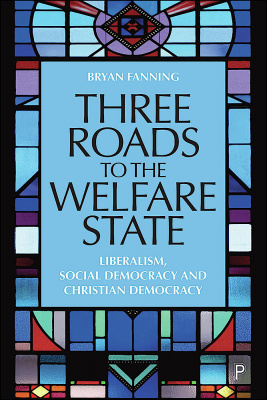
Published 12 October 2021
Original in English
First published by Dublin Review of Books
Contributed by Dublin Review of Books © Bryan Fanning / Dublin Review of Books
PDF/PRINTSubscribe to know what’s worth thinking about.

In memory of Nada Ler Sofronić, the feminist voice pivotal in supporting a unified vision of Bosnia-Herzegovina, drawing on valuable experiences as an intellectual, whose engagement was with the whole of Yugoslavia and beyond.

The euphoria of anti-fascists from WWII-occupied countries, meeting at international events, was a short-lived reprieve from oppression. Hungarian socialist groups, bringing women from all social classes together, went from publishing starstruck articles to testifying in Stalinist show trials, their solidarity forced into betrayal.